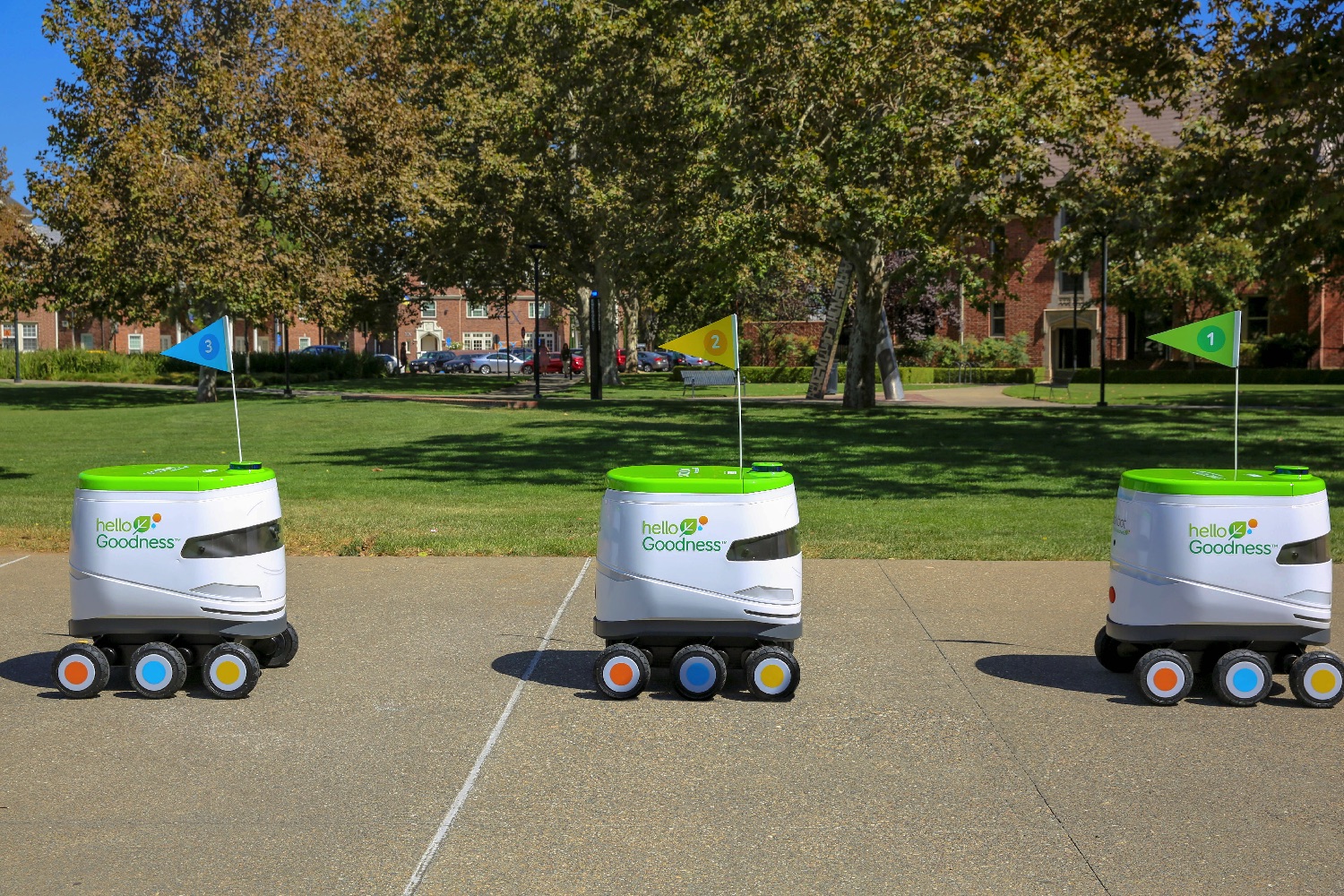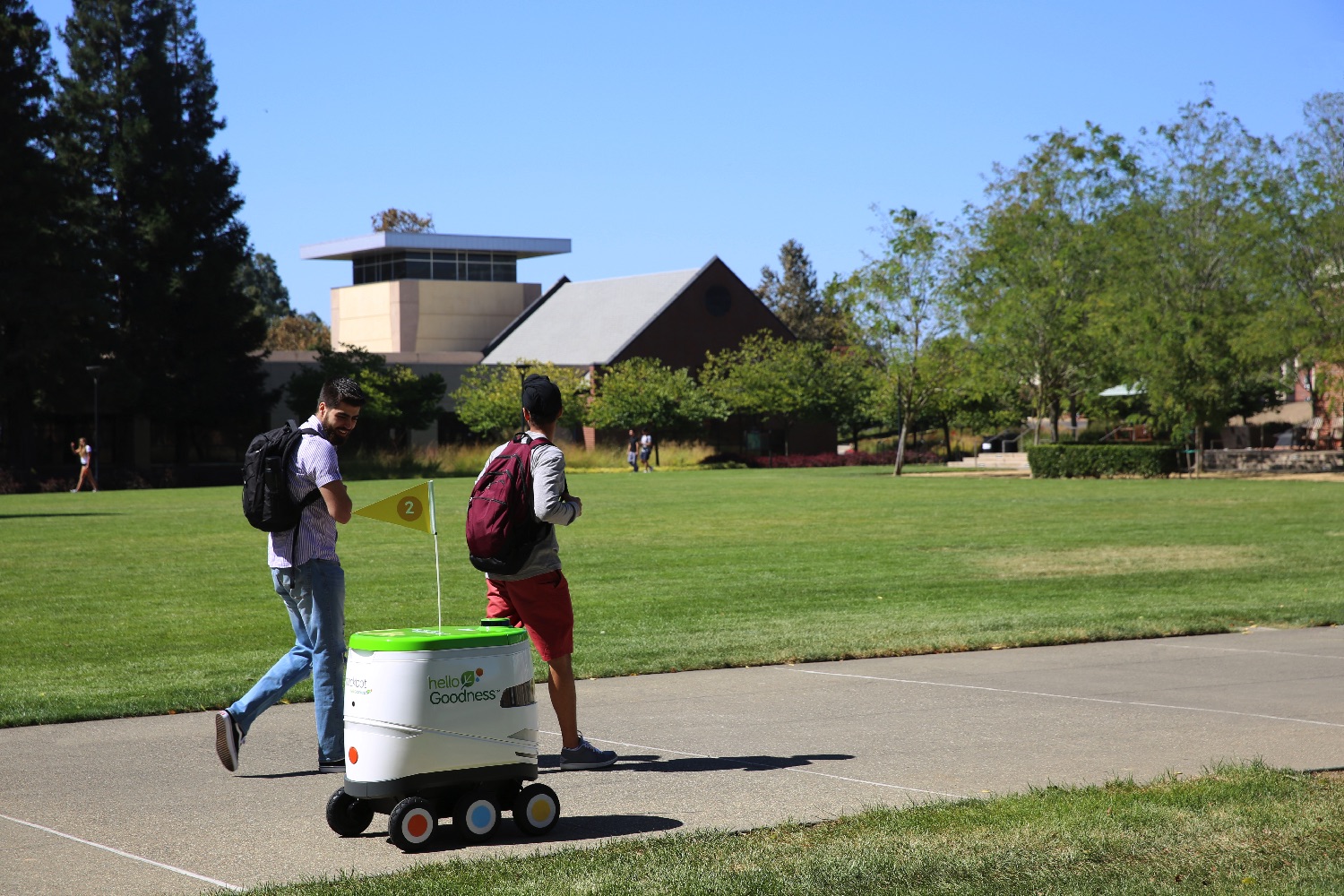Call us old before our time if you want, but it sure seems like students these days are getting lazier. Our proof? That students at the University of the Pacific in Stockton, California, no longer have to go to the vending machine to get their snacks. Instead, the vending machine comes to them — courtesy of Pepsi’s fleet of roaming Hello Goodness delivery snack bots.
These autonomous robots will deliver an assortment of snacks to 50 locations around the 175-acre campus during daylight hours. The robots can be summoned using an app, and then open up to release their nutritious (or, at the very least, delicious) contents upon arrival. Their on-hand inventory includes Smartfood Delight, Baked Lay’s, SunChips, Pure Leaf Tea, Starbucks Cold Brew, and more.
“We know that consumers today — and especially students — expect and demand more convenient options for great tasting, health-conscious snacks that fit their busy lifestyles,” Scott Finlow, vice president of Innovation and Insights at PepsiCo Foodservice, told Digital Trends. “So we partnered with Robby Technologies to create the company’s first-ever mobile vending machine to provide consumers with not just a new method of delivery for the snacks and beverages they’re looking for, but also a new wave of commerce.”
The robots are designed to travel upward of 20 miles on one charge, are capable of moving across challenging terrain (certainly as challenging as university campuses get), and can navigate in a variety of weather conditions. While Finlow acknowledged that part of the appeal is the fun novelty of having a robot deliver your snacks, he also noted that it offers potential for scale and efficiency by being able to deliver food to more people than a traditional vending machine.
As to what’s next for the rollout? From the sound of things, the University of the Pacific is serving as a test site for the technology. “We’ll be gathering and learning as much as we can about snack bot and the customer experience with it over the course of this spring semester,” he continued. “From there we’ll be able to better evaluate potential future applications and opportunities.”
Between this, mail delivery bots, and rivals like the robots build by Starship Technologies, it seems like 2019 may be the year in which delivery robots finally go mainstream.
Editors' Recommendations
- Roving surveillance bots are coming to our cities. Luckily, they’re here to help
- Self-driving meal machines are now feeding students at Purdue University







